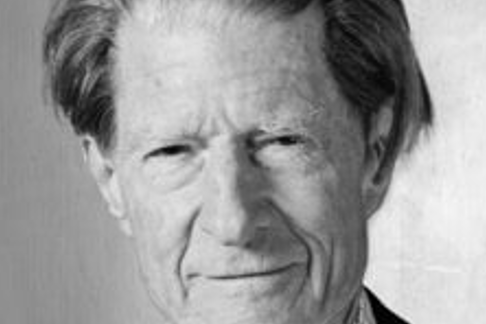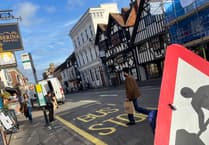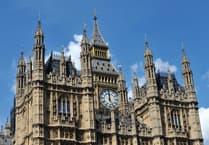John Bertrand Gurdon, who died on October 7 this year, was born in October 1933 in Dippenhall and later moved to Frensham, where his family lived at Furnell House on Frensham Road.

As well as becoming a Nobel Prize-winning biologist, he may also have been a descendant of the figure who helped inspire the legend of Robin Hood.
John was first sent to school at Frensham Heights where the staff assessed him as ‘mentally subnormal’. This was not one of Frensham Heights’ more notable successes.
His parents then moved him to Edgeborough where he thrived. At 13, he was sent to Eton, which he hated. In science he was bottom out of 250 boys. A schoolmaster wrote in his school report: “I believe he has ideas about becoming a scientist; on his present showing this is quite ridiculous.” He was removed from science classes and put to studying the classics, which was deemed easier.
He nonetheless managed to get into Oxford University to study classics, but his enthusiasm for science remained and he was allowed to change course and so the duffer who came bottom of the class started out on a career in science.
He was set the challenging task of moving cell nuclei between the cells of the frog. From this point on, John Gurdon’s progress was rapid. By the end of his PhD, he had succeeded in obtaining normal development of intestinal epithelial cell nuclei transplanted into an enucleated egg cell. The cells developed into tadpoles and then into frogs. This was the first decisive proof that any cell nucleus has the potential to become, like the nucleus of a stem cell, a complete individual. This work led, eventually, to the famous cloning of Dolly the Sheep.
Gurdon went on to fame and fortune. He was elected a Fellow of the Royal Society in 1971 and he was knighted in the 1995 Birthday Honours for “services to developmental biology”. The Gurdon Institute at Cambridge was named after him. In 2012 he, and another scientist, Shinya Yamanaka, were jointly awarded the Nobel Prize in Physiology or Medicine “for the discovery that mature cells can be converted to stem cells.”
Gurdon kept his school report framed over his desk. He told a reporter: “When you have problems, like an experiment doesn't work, which often happens, it's nice to remind yourself that perhaps after all you are not so good at this job and the schoolmaster may have been right!”
Sir John Gurdon is the only Nobel laureate to have lived in Frensham. However, he had ancestors who had long left their mark on the area. The most colourful was the remarkable Adam de Gurdon.
Adam de Gurdon was the scion of an old Norman family. He became bailiff of Alton. He was knighted in 1254 by Henry III. However, he made the mistake of supporting Simon de Montfort in the second Barons’ War. He was outlawed for treason and rebellion and, after de Montfort was killed at the Battle of Evesham in 1265, he was imprisoned. He managed to buy his way out. With a band of robbers, he proceeded to terrorise the “Pass of Alton” and ravaged further afield in Berkshire, Buckinghamshire and Hampshire.
Gurdon, a giant of a man, was eventually cornered by Prince Edward near Alton. Legend has it they fought a duel which Edward won, whereupon he forgave Gurdon who became, thereafter, a lifetime ally of the prince, now King Edward I. De Gurdon died in 1304 at the improbably advanced age of eighty or more. De Gurdon was made the Ranger of Alice Holt and Woolmer Forest, very much poacher turned gamekeeper. He became a hero of Victorian literature. Some claim that the Robin Hood legend is based on the exploits of de Gurdon.
Another of Sir John’s ancestors was John Gurdon of Assington, MP for Sudbury in the Long Parliament. He was nominated to sit in judgement on Charles I, but wisely decided not to sign the death warrant.
Had he signed he would have been hanged, drawn and quartered after the Restoration of Charles II. Frensham’s Sir John, and Alice Holt’s Sir Adam, were of the same stock. But they were very different men.
For more information about the Farnham and District Museum Society, visit www.farnhammuseumsociety.org.uk/





Comments
This article has no comments yet. Be the first to leave a comment.